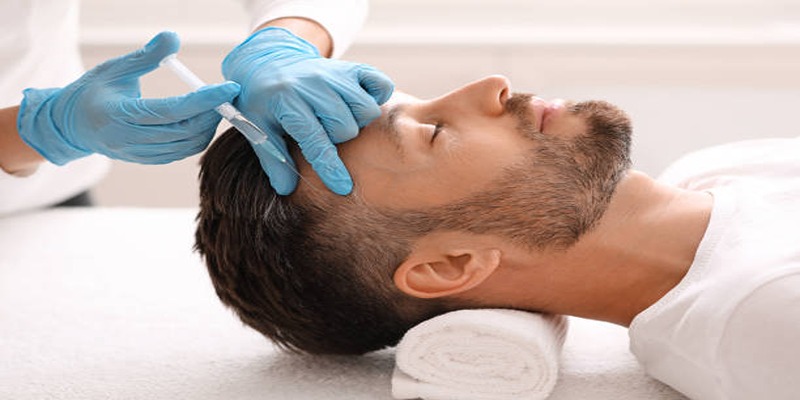7 Surprising Triggers That Might Be Causing Your Headache
Advertisement
Headaches can strike unexpectedly, disrupting your day and lowering your energy. While causes like stress and dehydration are well-known, other surprising triggers might be the culprit. From certain food additives to changes in weather, understanding these unexpected factors can help you manage and prevent headaches more effectively. Discover the hidden reasons behind your headaches and find relief.
1. Blame It on Your Posture
Your posture might be causing more harm than you realize. Hours spent slouching at your desk, hunching over a laptop, or endlessly scrolling on your smartphone can place excessive strain on your neck, shoulders, and upper back. Over time, this strain tightens muscles and often triggers tension headaches. Poor posture can also restrict blood flow and compress nerves, intensifying the discomfort.
The fix? Create an ergonomic workspace. Adjust your chair so your feet rest flat on the floor and your knees form a 90-degree angle. Position your desk and monitor at eye level to avoid constantly craning your neck. Consider using a lumbar support pillow to maintain the natural curve of your spine.
In addition, make it a habit to take regular breaks; stretch, move around, and reset your posture throughout the day. Focus on exercises that strengthen your core and upper back to promote proper alignment. These simple but intentional adjustments can go a long way in preventing tension headaches and enhancing your overall well-being.
2. Strong Scents and Perfumes

While pleasant fragrances can uplift your mood and stir cherished memories, overpowering scents from perfumes, candles, cleaning products, or air fresheners can sometimes do more harm than good. For individuals sensitive to smells, these strong aromas may trigger headaches, a condition linked to osmophobia—heightened sensitivity to odors.
If you notice a pattern of headaches after exposure to strong scents, it’s worth reassessing your surroundings. Consider switching to unscented or lightly scented options for perfumes, cleaning products, and air fresheners, as these are less likely to cause discomfort. Improving ventilation in your home or workspace is equally important. Open windows, use air purifiers, and maintain a fresh, odor-free environment to minimize airborne irritants.
By taking these steps, you can create a more comfortable, balanced atmosphere that not only reduces headaches but also enhances your overall well-being. Small changes can make a big difference in how you feel every day.
3. Weather Changes
Shifts in weather can surprisingly be a significant trigger for headaches, particularly for those sensitive to environmental changes. Variations in temperature, humidity, or barometric pressure—as well as sudden storms or dry, windy conditions—can lead to what are often called "weather headaches" or "barometric pressure headaches." These headaches can mimic the symptoms of migraines or tension headaches, depending on the individual.
While we can’t control the weather, there are effective strategies to reduce its impact. Staying hydrated is essential, especially during hot or dry conditions, as dehydration can worsen headaches. Maintaining a consistent sleep routine is equally important, as poor sleep increases susceptibility to headache triggers. Additionally, moderating your intake of caffeine, sugar, and processed foods can help stabilize your body’s response to environmental changes.
For those who frequently experience weather-related headaches, keeping a headache diary can be a valuable tool. Tracking patterns and identifying triggers can provide insights to better manage and prevent future episodes.
4. The Impact of Skipping Meals or Irregular Eating Habits
Your brain relies on a steady supply of glucose to perform at its best. Skipping meals or going too long between them can cause your blood sugar levels to drop, often leading to headaches. These hunger-induced headaches are commonly accompanied by symptoms like fatigue, irritability, trouble concentrating, and sometimes even dizziness. Over time, irregular eating habits can disrupt your metabolism, making it harder to maintain consistent energy throughout the day.
To prevent this, prioritize regular, balanced meals. Aim to eat every 3-4 hours to stabilize your blood sugar and avoid energy dips that can affect your mood and physical performance. Build meals with a mix of protein, healthy fats, and complex carbohydrates to provide sustained energy and support brain function.
On busy days when sitting down for a full meal isn’t feasible, have healthy snacks readily available to keep you energized and focused. Quick options like a handful of trail mix, a piece of fruit with nut butter, or a protein bar can help you stay fueled and avoid those dreaded headaches caused by hunger.
5. The Hidden Risk of Overusing Pain Relievers
Ironically, the medications meant to ease headaches can sometimes trigger them. Overuse of common pain relievers like ibuprofen, acetaminophen, or aspirin can result in "medication overuse headaches," also known as "rebound headaches."
If you're reaching for painkillers more than two or three times a week, it might be time to reconsider your approach. Speak with a healthcare professional to explore alternative solutions, such as lifestyle adjustments, stress management techniques, or preventive medications. Taking proactive steps can help break the cycle and provide more sustainable relief.
6. Caffeine Withdrawal and Dehydration
Caffeine can be both a remedy and a culprit when it comes to headaches. While it may provide relief for some, abruptly cutting back on caffeine can trigger withdrawal headaches. This happens because caffeine narrows the blood vessels in your brain, and when you suddenly stop consuming it, those vessels expand, causing discomfort.
To avoid the pain of withdrawal, it’s best to reduce your caffeine intake gradually rather than quitting all at once. Lower your consumption in small, manageable steps over the course of several days or weeks. This approach helps minimize withdrawal symptoms and makes the transition smoother.
7. Bright or Flickering Lights

Bright lights, flickering screens, and fluorescent lighting can be common triggers for headaches, particularly among those prone to migraines. This heightened sensitivity to light, known as photophobia, is often worsened by prolonged exposure to screens.
To minimize the risk, adjust the brightness and contrast settings on your devices to a comfortable level. Consider using anti-glare screens or blue light filters, and make it a habit to take regular breaks to rest your eyes. If you work in a brightly lit environment, wearing tinted glasses or opting for a desk lamp with softer lighting can help create a more eye-friendly workspace.
Conclusion:
Headaches are more than just an annoyance—they can deeply affect your daily life. By uncovering and addressing unexpected triggers, you can take meaningful steps to reduce their frequency and severity. Simple adjustments, like improving posture, refining your diet, or staying aware of environmental factors, can lead to noticeable improvements. However, if your headaches persist or worsen, it’s essential to consult a healthcare professional. They can help uncover any underlying conditions and create a tailored treatment plan.
Advertisement












